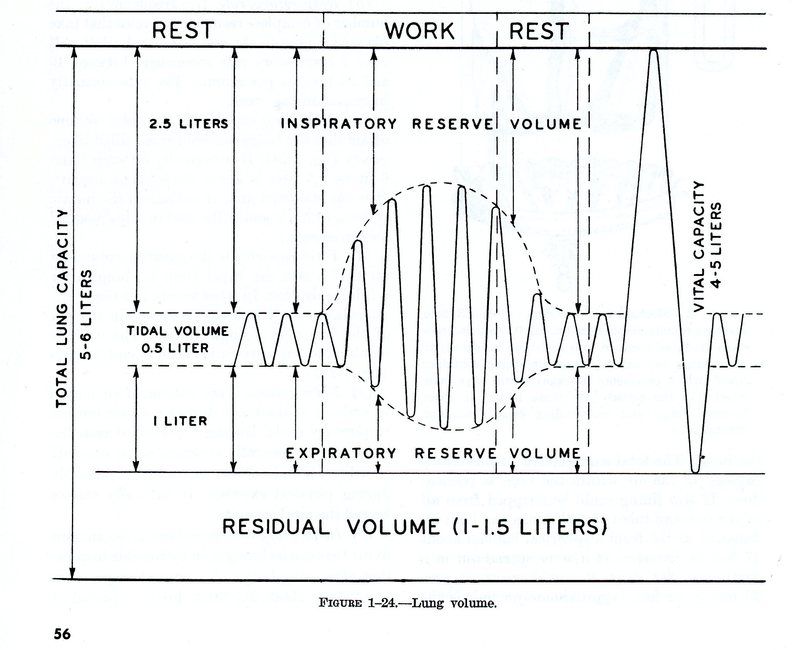My OW instructor's follow-up was but you will be highly motivated to get there.
As I recall there's about 2 litres of stored oxygen in the body and only some (30%?) is in the lungs -- that's after breathing uncompressed air. ISTR it should be enough to keep you going for a minute. ICBW, mis-remembering, and all that, of course. One should be able to cover more than 20 m in a minute, even in gear with all of its drag. I would not want to try that either, but 40 m should be doable though extremely unpleasant. With a high risk of DCS unless it's the very first dive of the trip and you splashed with an empty tank.
dmaziuk,
You are only partially correct. Air volume is measured in liters in the lungs, but not in the body. In the blood stream, it is measured hemoglobin saturation. In the lungs, you have a "residual volume" of air, which is air which is there after a full exhalation. The below chart shows this:

From the U.S. Navy Diving Manual, March 1970.
Note that if the diver is breathing hard, and exhales completely, there is still 1.0 to 1.5 liters of air in the lungs. Let's say that (s)he is at 99 feet depth, which is 4 atmospheres absolute (surface is 1 atm absolute). If he starts ascending from that depth, the 1.5 liters will grow as the depth diminishes. At the surface, that 1.5 liters will have grown to 6 liters, but start growing slowly at first, and the last half of that will grow in the last 33 feet. The same holds true of the air in the diver's tank(s), in that it will grow as the diver ascends too. Therefore, at least a breath or two is available on ascent from the tanks.
I hope this helps concerning the ascent.
When I was an instructor, there was no "deep" certification. We taught sport divers to dive within the no-decompression limits, and that table went down to 130 feet (39 meters) for five minutes (including descent time). The NAUI Dive Tablen from 1990 had these points to remember:
--Consider all dives made shallower than 40' (12m) as 40' dives.
--On any dive, ascend no faster than one foot per second.
--For maximum dive time, make all repetitive dives shallower than your previous dive.
We did dive to 130 feet, but those necessarily were "bounce dives," and we discouraged divers from doing these deep dives. Most interesting things were seen between 60 feet and the surface in most dive locations.
My deepest dive was 210 feet in Warm Mineral Springs when I dove on that project with Sonny Cockrell and Larry Murphy, I think. The reason I say "I think" is that I had one dive in 1968 for search purposes (a helicopter had crashed) off an island in the Ryukyu Islands near Okinawa. We started descending where an eye witness said the helicopter had gone down, and stopped swimming down after about five minutes. We gathered, and compared depth gauges; each read differently, from zero to 200+ feet. We aborted the dive without seeing the bottom. But this was a military dive as an USAF pararescueman. I don't advocate deep diving, and feel that sixty feet is a great depth for most divers.
SeaRat





